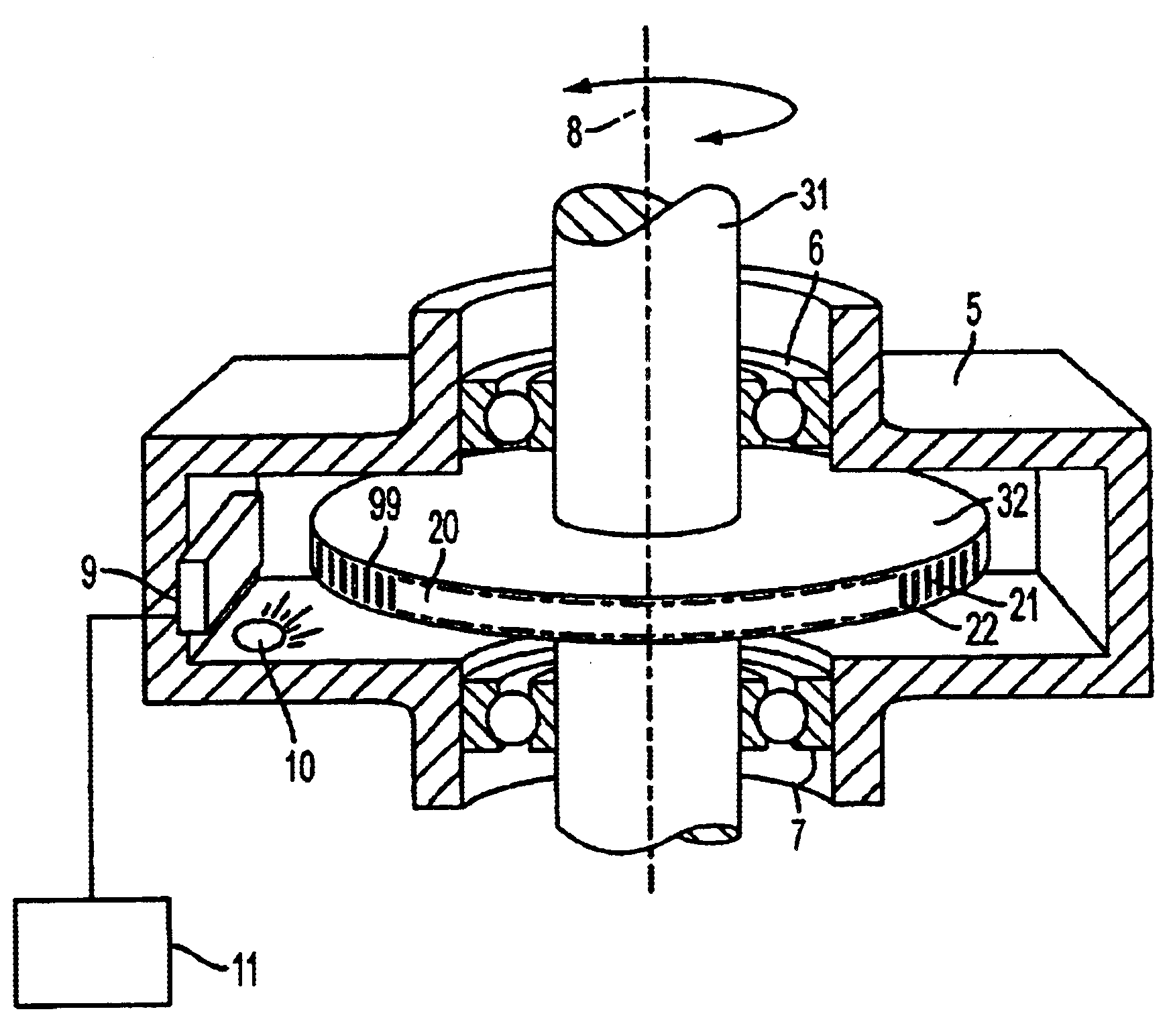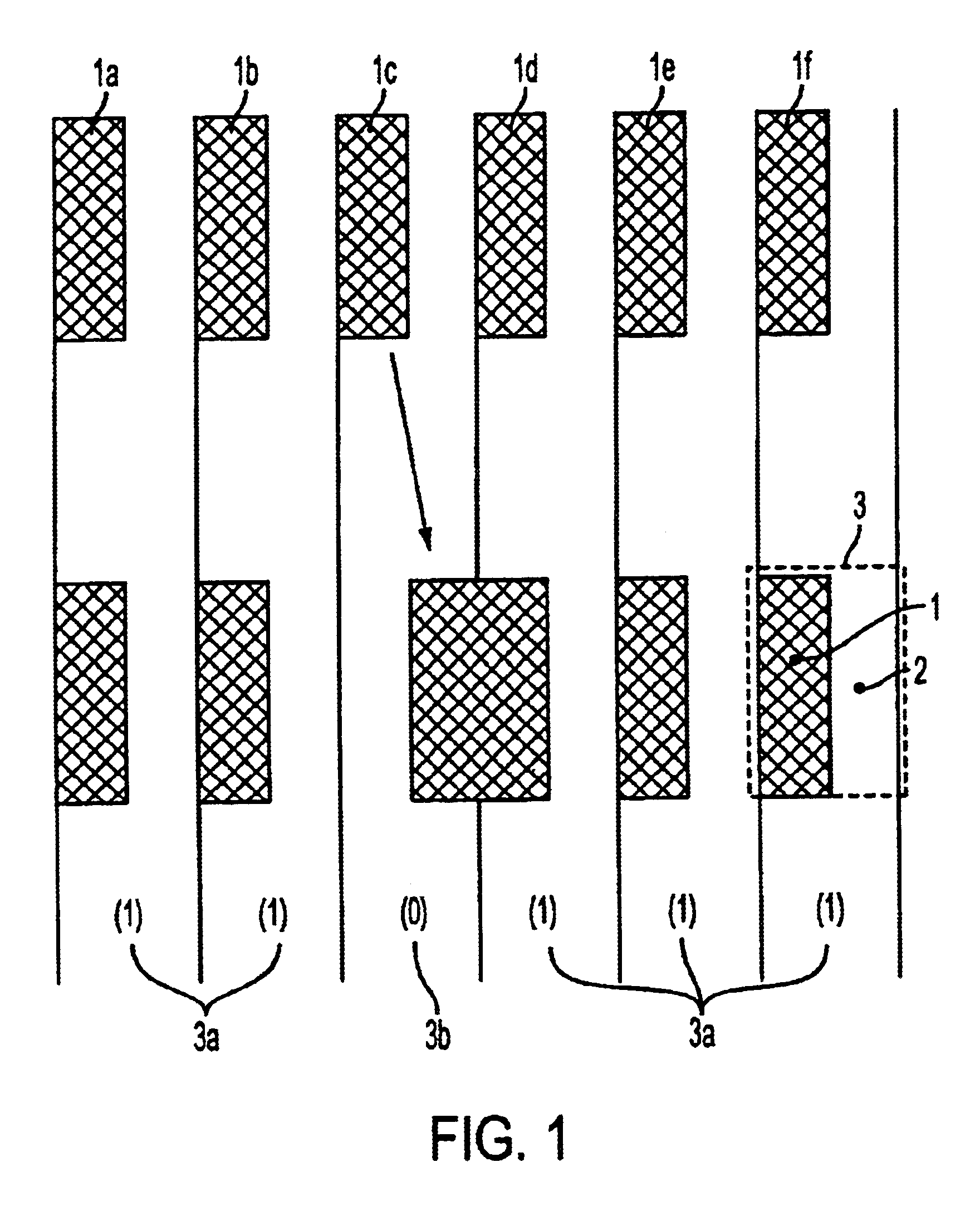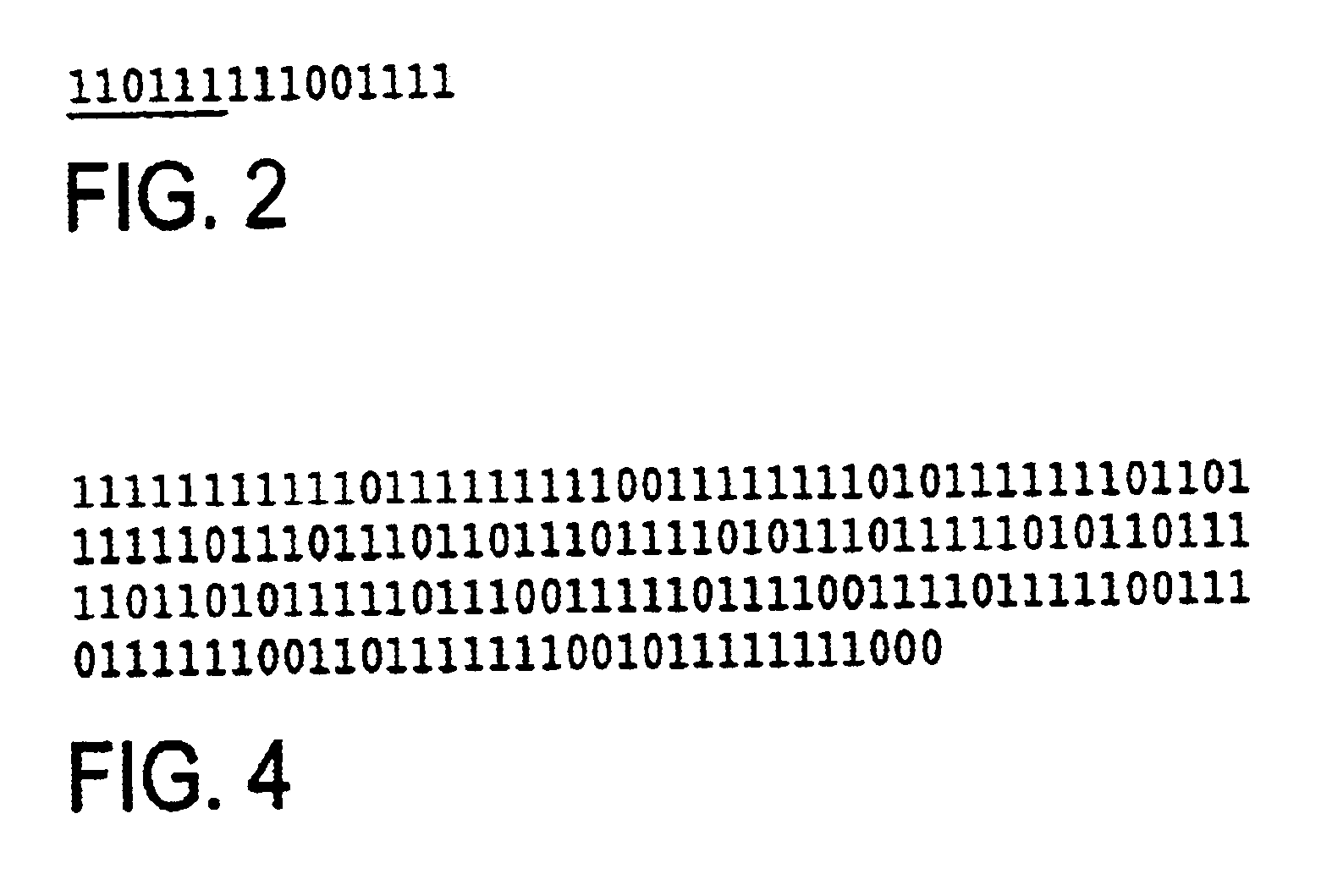Position encoder using statistically biased pseudorandom sequence
a pseudorandom sequence and encoder technology, applied in the field of position sensors, can solve the problems of degrading the quality of the image to be processed, affecting so as to achieve the effect of increasing the accuracy of absolute position measuremen
- Summary
- Abstract
- Description
- Claims
- Application Information
AI Technical Summary
Benefits of technology
Problems solved by technology
Method used
Image
Examples
Embodiment Construction
FIG. 1 depicts how a 50% regular duty cycle coding pattern containing bars 1a-f can be modified to a Manchester code by moving one bar 1c in the pattern. The Manchester code can be disposed upon a surface such that bars 1 are of constant thickness and extend in a direction perpendicular to the intended direction of positional measurement of the barcode. The coding pattern is shown as viewed by a known array of detectors (not shown). Each bar 1 and its adjacent space 2 define a single bit 3.
The Manchester code is formed by a consecutive sequence of bits 3. In each bit 3, bar 1 comprises of a region of low reflectivity or transmissibility and adjacent space 2 is of a region of high reflectivity or transmissibility. Over the whole of the Manchester code comprising 6 bits, one regressive bit 3b is of binary state (0). The remaining five dominant bits 3a are of binary state (1).
FIG. 2 depicts a sequence of 15 bits, of which 12 bits are dominant bits of binary state (1), and of which 3 bi...
PUM
 Login to View More
Login to View More Abstract
Description
Claims
Application Information
 Login to View More
Login to View More - R&D
- Intellectual Property
- Life Sciences
- Materials
- Tech Scout
- Unparalleled Data Quality
- Higher Quality Content
- 60% Fewer Hallucinations
Browse by: Latest US Patents, China's latest patents, Technical Efficacy Thesaurus, Application Domain, Technology Topic, Popular Technical Reports.
© 2025 PatSnap. All rights reserved.Legal|Privacy policy|Modern Slavery Act Transparency Statement|Sitemap|About US| Contact US: help@patsnap.com



